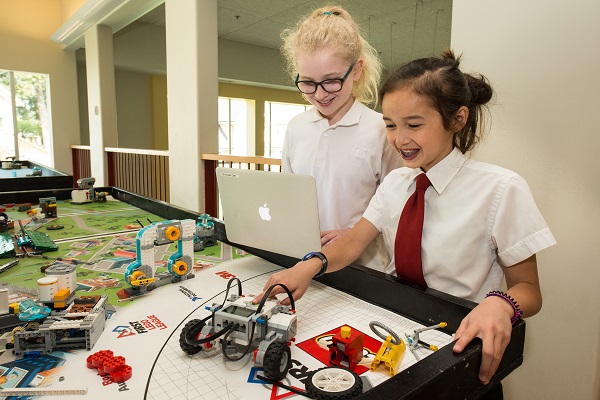Empowering Girls though STEM Education
Science Technology Engineering and Math - Advancing your path to a successful future!

Nerdy. Loner. Geek. Stereotypes create a negative impression of science, technology, engineering and math in young girls at a surprisingly young age. However, by encouraging an early interest, it is possible to dismantle the stereotypes and ignite true passion.
Beyond an acronym for science, technology, engineering and math, STEM is an educational philosophy that is:
- Inquiry based
- Interdisciplinary
- Emphasizes critical thinking
- Centred on question, observation, reflection, and communication
With STEM increasingly becoming a driving force in the global economy, there is a troubling shortage of skilled workers and students in STEM fields. Even more alarming is the shortage of female skilled workers and female students in STEM. Women make up only 15-25% of the current STEM workforce worldwide, and the gap is broadening.
According to a major study conducted by the Department of Psychology, Lund University, Sweden ( click here to read the full study ), “this difference can be partially explained by social belongingness: teenagers felt they would fit in better in subjects that had more of their own gender. But another important factor was self-efficacy: the belief that one can succeed in a domain.”
In an all-girls environment, those barriers are broken down and “social belongingness” is no longer a factor. Building girls’ confidence in their technical abilities is a key component to encouraging girls to pursue STEM fields later in their studies and careers.
By teaching STEM subjects cohesively and encouraging female students to use STEM skills to solve problems across disciplines, STEM education becomes more relevant and fun. Girls begin developing the sort of critical thinking skills needed in the high-tech workforce, both now and in the future.
Founded in 1908, St. Margaret’s School was the first independent school in Canada to launch an all-girls STEM curriculum and SMS continues to push the boundaries of how to integrate STEM into the classroom and beyond. For example, SMS is hosting an event, Girls’ STEM Leadership Conference: Sustaining Our Future, aiming to inspire young leaders by sharing stories of integrity, environmental stewardship and green innovation. Approximately 400 girls in Grades 7 through 10 from both public and independent schools across Southern Vancouver Island and British Columbia’s Lower Mainland will participate in this conference.
Graduates of girls’ schools are six times more likely to consider majoring in math, science, and technology and three times more likely to consider engineering compared to girls who attended coed schools, according to the National Coalition of Girls’ Schools. If you know an intelligent,
curious young girl, consider an all-girls education to help her reach her full potential –because tomorrow’s world needs her.